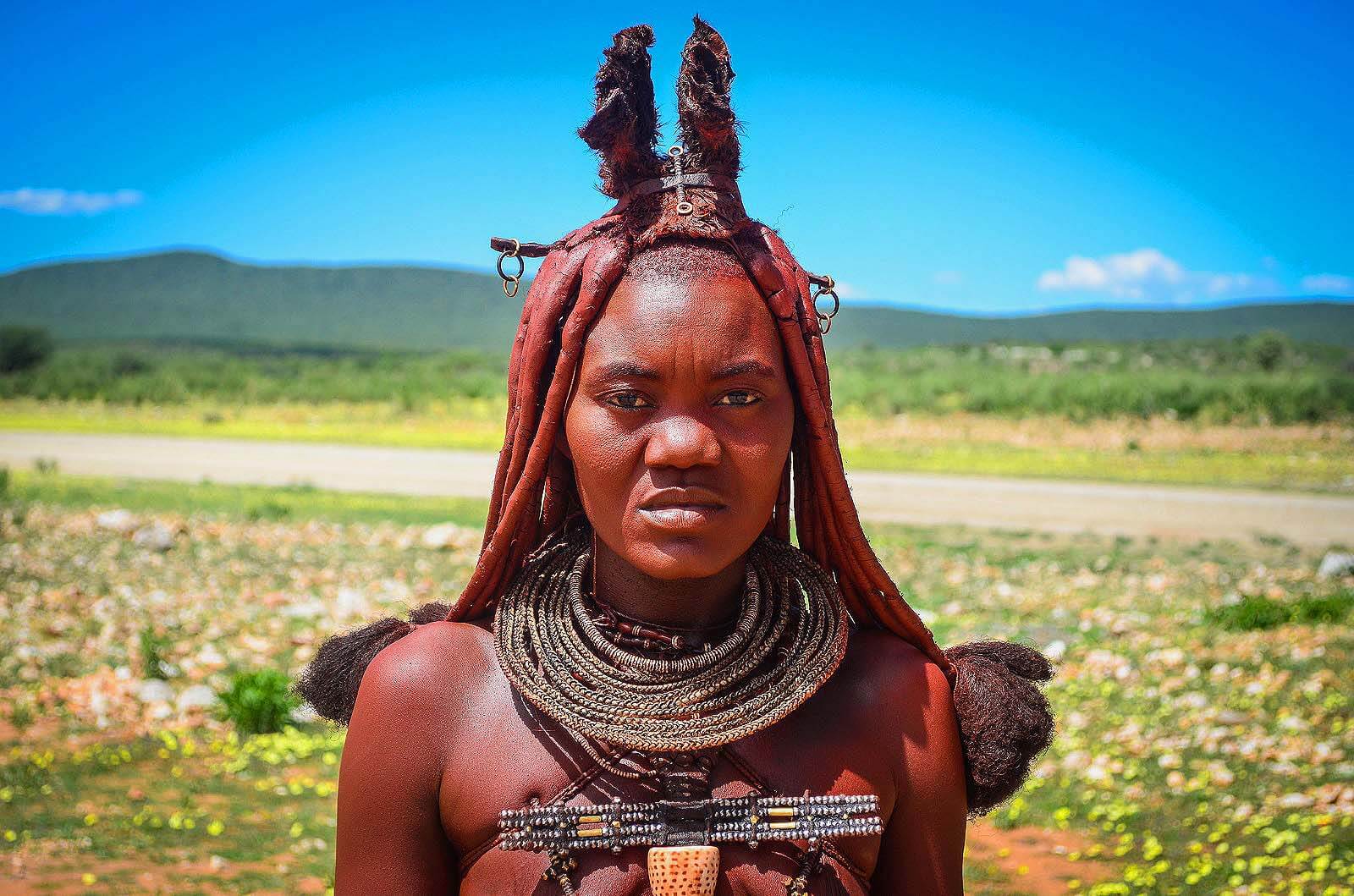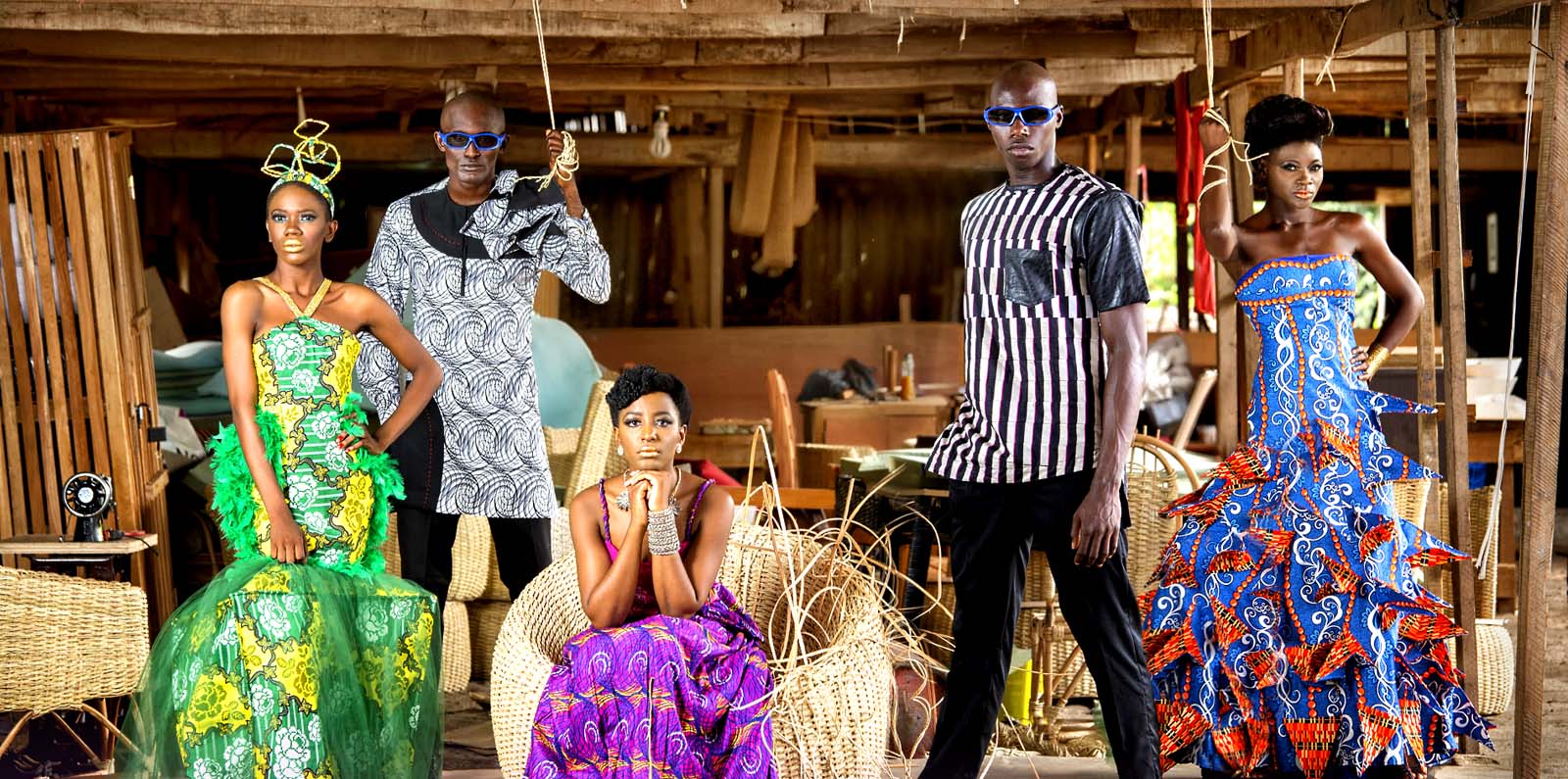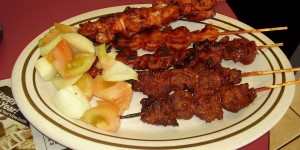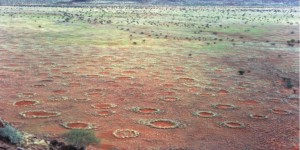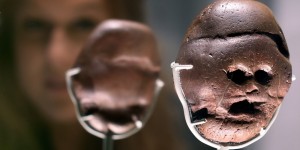The ancient tribe of semi-nomadic herders from the barren lands of Namibia known as the Himba have been a favorite for photographers. Their fame for ornate styles have spread beyond the remote, Kunene region where they live, mostly tending livestock. A practice not carried out by men, the Himba women apply a paste of butter, fat and red ochre (sometimes scented with aromatic potion) called otjize each morning to their skin and hair, giving them a distinctive red hue. There has been much speculation about the origins of this practice, with some claiming it is to protect their skin from the sun, or repel insects. But the Himba consider this an aesthetic act of beautification, a sort of traditional make-up they apply every morning when they wake.This practice has survived generation of war, farming and drought.

A Himba woman shows off her long dreadlocks, created using a mixture of ground ochre, butter and goat hair
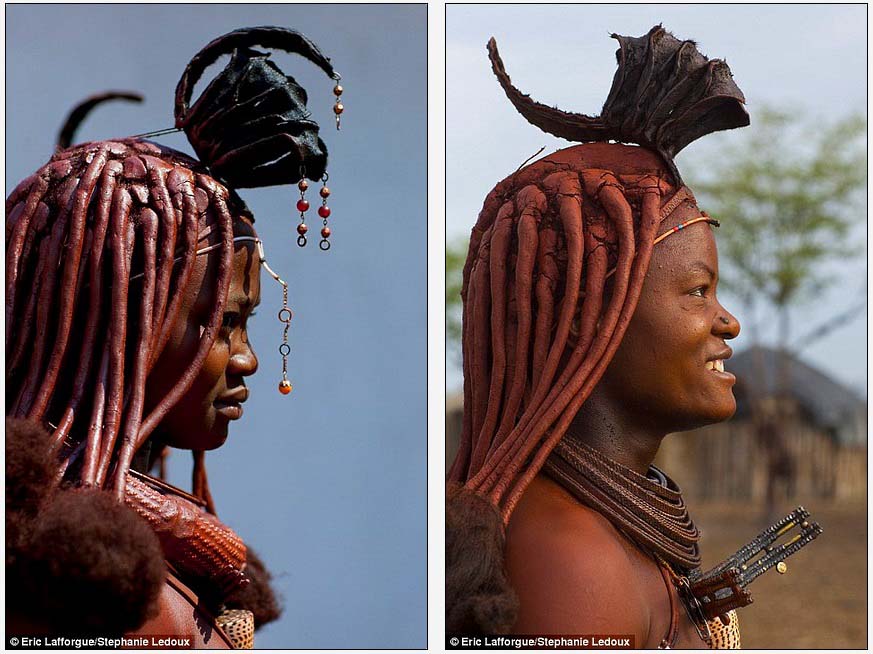
After a year of marriage or following the birth of their first child, Himba women add an elaborate animal skin headdress to their hairstyle
They are majorly pastoral people and are very welcoming to visitors coming to witness their way of life.
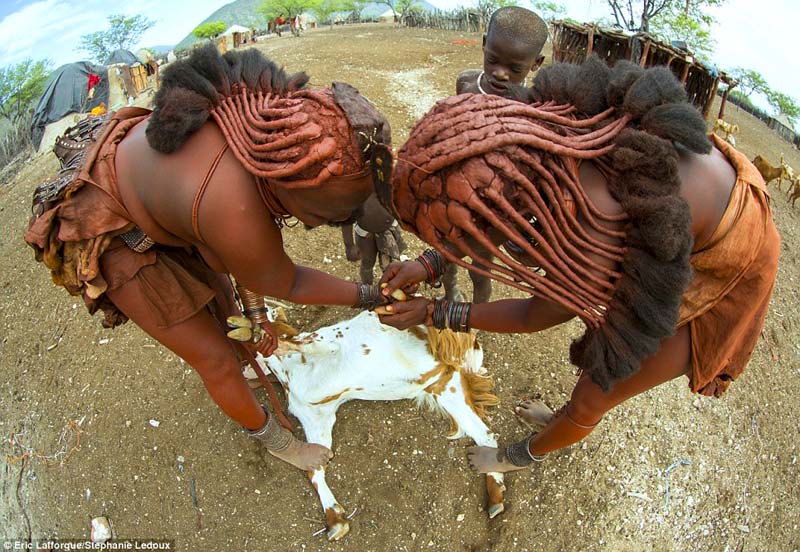
A pair of women remove ticks from a goat – a job that can take hours when done by hand as the Himbas do it. Sometimes, the children help out
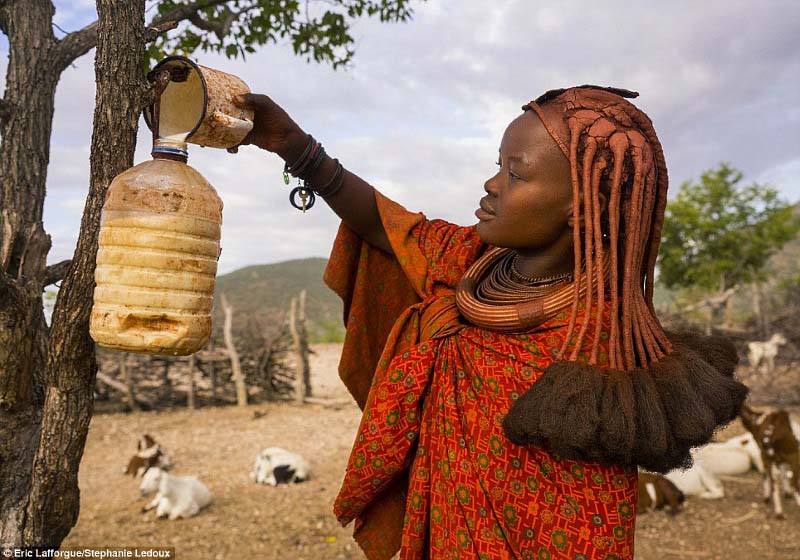
Women do most of the jobs in and around the home, including milking the goats and storing their milk in jerrycans – some are made from old bottles
The homes of the Himba, who number between 30,000 and 50,000, are either round structures constructed of sapling posts, with a dome looking roof which is plastered in mud and dung or simple huts built with mud.

The houses are made of mud and cow dung. These materials stay cool in their hot weather
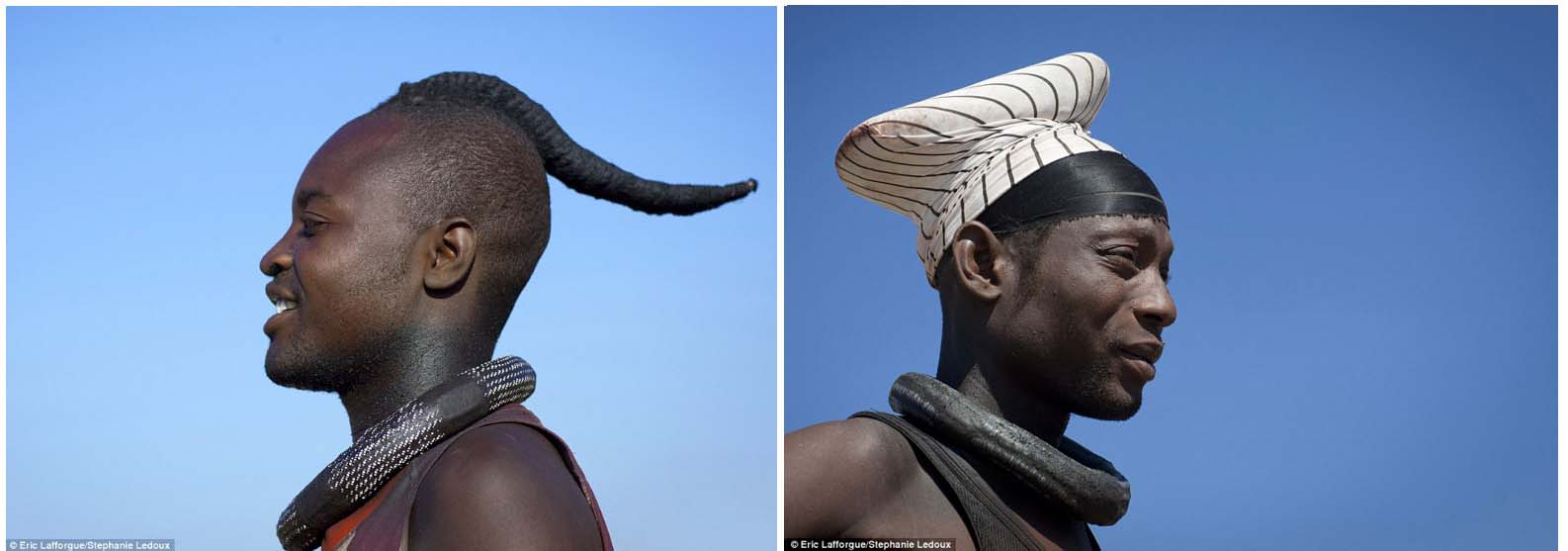
This man’s single plait indicates that he is unmarried. Once he is, he will cover his hair for the rest of his life apart from when he attends funerals
Whether a protective measure against the hot environment or a just a cultural trait, Namibia’s red women in the Himba tribe have a unique sense of fashion and style which has become an iconic image of Africa.

The stunning Epupa Falls on the Cunene River. The Namibian government wants to build a huge dam here and is currently negotiating with the Himba people
[Header image]– Himba woman in Kaokoland – FLICKR _jbdodane – CC BY-NC 2.0
Gallery Images – Eric Lafforgue/Stephanie Ledoux Via dailymail.co.uk/
